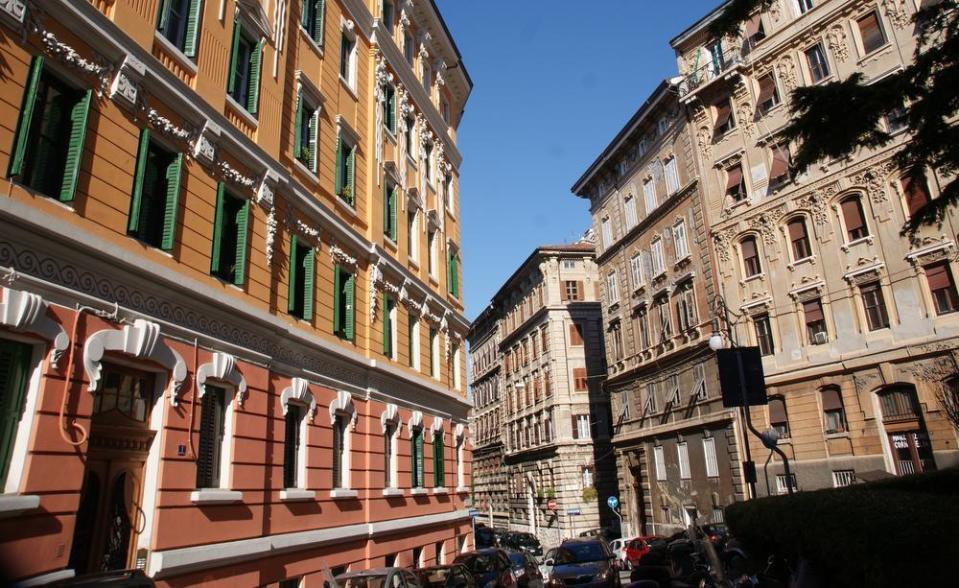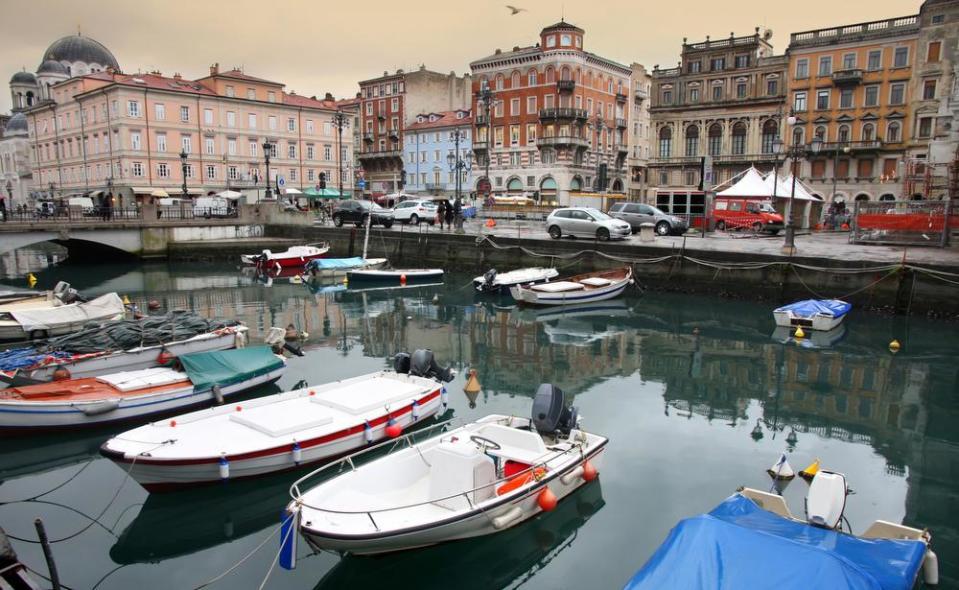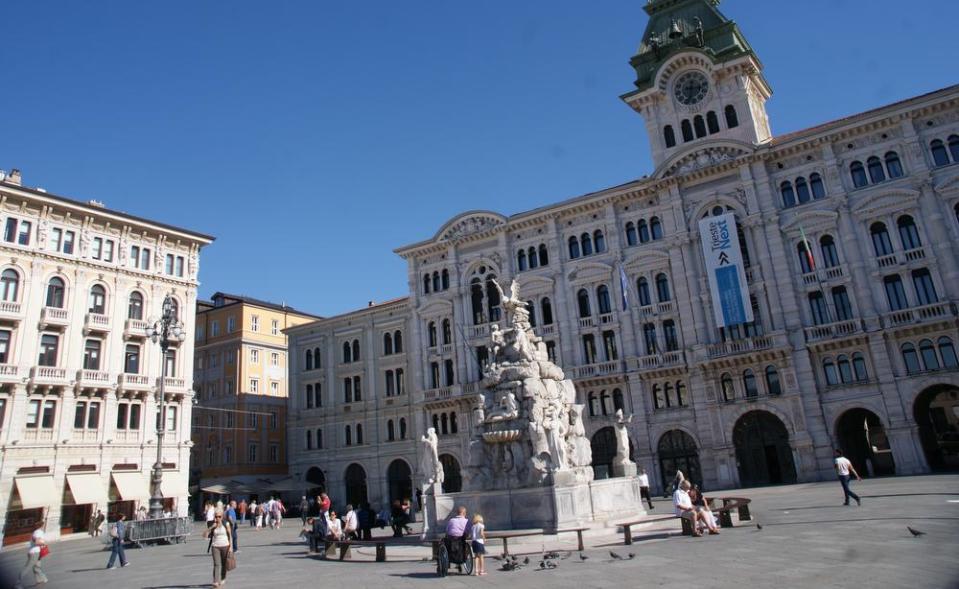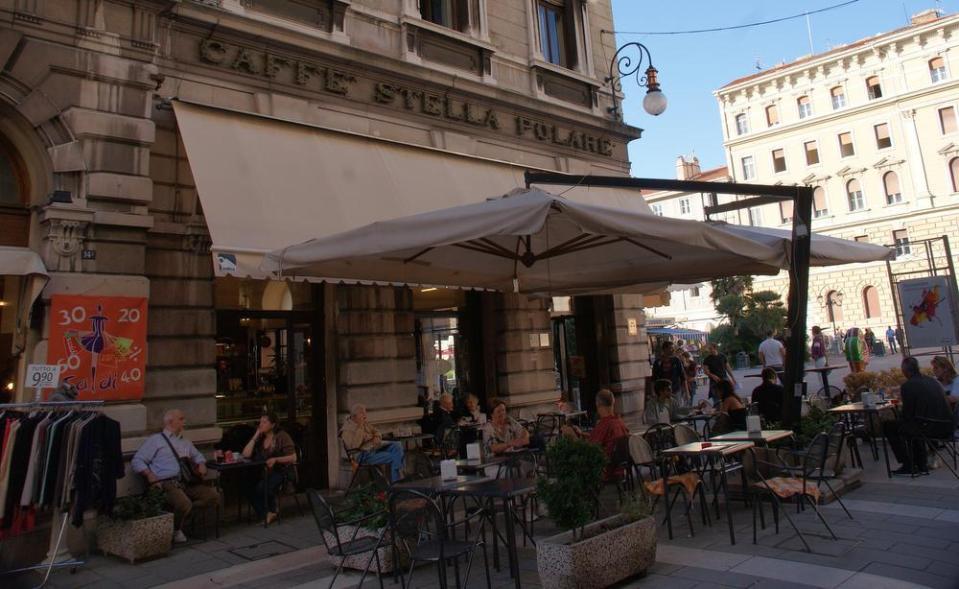Enigmatic port city’s poetic soul
More than a century after James Joyce’s The Dubliners was published, Steve McKenna is inspired by cosmopolitan Trieste on the Adriatic coast, where the Irish author ‘grew up’.
The story is the stuff of literary legend. When James Joyce, a cash-strapped 22-year-old Irishman, arrived in Trieste in 1904, he left his muse and future wife Nora Barnacle on a park bench opposite the railway station while he went hunting for cheap digs.
Joyce soon found himself behind bars; arrested after trying to intervene in an altercation between police and a rowdy group of English sailors. Released from the slammer with help from the British consul, Joyce hurried to rejoin Nora outside the station; and so began his 15-year, on-off love affair with Trieste, an enigmatic port city then part of the mighty Austro-Hungarian empire, but now tucked away in north-east Italy, 5km from the Slovenian border, 170km from Venice.
Exiting Trieste’s station — which fuses late-19th-century pomp with mod cons — I inhale the sea air and amble to my accommodation. Unlike Joyce, I’ve booked ahead. Run by a lovely Italian woman called Maria, my affittacamere (guesthouse) is hidden in one of Trieste’s innumerable pastel-shaded five-storey apartments. Conveying an air of faded grandeur, these buildings are characterised by peeling facades, swirling marble stairways and clattering old lifts whose doors you have to shut manually.
Maria’s is certainly an atmospheric base for exploring the city where Dublin-born Joyce “grew up”, as contemporary Irish novelist Colm Toibin puts it. Absorbing Trieste’s multicultural melting pot, Joyce rubbed shoulders with everyone from Viennese aristocrats to poverty-stricken Balkan migrants, gleaning material for and penning much of his finest work, including snippets of his magnum opus, Ulysses, plus A Portrait of the Artist as a Young Man, and The Dubliners, which he battled for almost a decade to get printed.
Last year was the centenary of the publication of this collection of 15 short stories, which are set in Dublin but have universal appeal, and have been lauded by critics for Joyce’s wry and timeless insights about human nature.
Tapping into the Joyce interest, Trieste’s tourist office, with the help of Joyce aficionado Renzo Crivelli, has mapped out an easily walkable Joyce Trail. There are 22 spots, including the writer’s myriad former lodgings (nine in all), favourite social hangouts and miscellaneous addresses, such as the ex-Berlitz School, where he taught English to supplement his meagre writer’s income. I walk through Trieste’s old red-light district, where, in Joyce’s day, up to 400 prostitutes would offer round-the-clock services.
Apparently, it partially inspired the seedy Nighttown of Ulysses, but it’s sedate and clean today, spiralling into the city’s old Jewish ghetto, where I find the Joyce Museum, an intimate little place which explores the Irishman’s legacy and that of his writer friend, Italo Svevo. A Triestino of German-Jewish ancestry, Svevo was the model, critics believe, for Leopold Bloom, the fictional protagonist of Ulysses.
When he wasn’t teaching, writing and being a family man (he fathered two children with Nora, before finally marrying her in 1931), Joyce would frequent Trieste’s multilingual drinking dens, where he got an ear for Triestino, the harsh, Venetian-style local dialect curried with German and Slavic flavours.
Many venues were boozy and rumbustious; others were bourgeois and intellectual, evoking the elegant coffee houses of Vienna, hub of the Austro-Hungarian empire.
A few have survived, including Caffe San Marco, where Joyce and Svevo drank with the poet Umberto Saba. The cafe, 101 this year, retains a delightful old-world aura with its mahogany features and furniture. One of its regulars, Claudio Magris, a Triestine novelist and philosopher, has described it as “a place where you’re at peace; you read, you write, you chat”.
Another enduring pit stop is the Pasticceria Caffe Pirona, where Joyce’s photograph adorns the wall. He would breakfast here on presnitz, a sweet local pastry, accompanied by red wine. Many punters prefer presnitz with espresso or cappuccino.
Trieste touts itself as “Italy’s coffee capital”, with millions of aromatic bags of coffee beans entering the city’s seaport annually. According to surveys, locals consume twice as much caffeine as the Italian average.
Many Trieste cafes flaunt the iconic logo of Illy — the coffee dynasty founded in Trieste by Hungarian immigrant Francesco Illy in 1933 (his descendent Riccardo has twice been city mayor).
I pause by Caffe Stella Polare, where Joyce was said to read his stories to younger brother, Stanislaus, who also emigrated to Trieste.
Spilling out on to pedestrianised Via Dante Alighieri, the cafe diagonally faces Canal Grande, a photogenic waterway dotted with little boats, lined by handsome palazzi (palaces) and arched over by a small bridge sporting a bronze statue of Joyce crafted by local sculptor Nino Spagnoli. Two couples are snapping photographs of it when I wander over.
“You know, I tort he would be a lot taller,” says one of the women, with a vivid Dublin twang.
Joyce enjoyed escaping into the steep limestone hills overlooking Trieste, via a vintage funicular. But I’m told, with an apologetic shrug from a woman at the tourist office, that the funicular, founded in 1902, is out of action (although the service has since resumed).
Visitors often remark that Trieste doesn’t feel 100 per cent Italian. The city was annexed by La Repubblica only following the demise of Austria-Hungary post-World War I. And when you see squawking seagulls soaring above elegant Hapsburg-era mansions, and pork and sauerkraut advertised on restaurant menu boards, Vienna-on-Sea comes to mind.
Yet some of Trieste’s Orthodox churches recall Greece and Serbia, while Miramare, a fanciful seafront castle on the city’s outskirts that was once home to Archduke Maximilian, belongs in a fairytale.
Trieste’s Italian flavours shine through, however, especially when navigating the knot of scooter-filled alleys running off majestic Piazza Unita d’Italia — particularly during early-evening aperitivo hours, when hordes of fashionable types gather for nibbles and tipples in alfresco cafes, pizzerias and trattorias.
Joyce didn’t really like Trieste under Italian administration. He returned in 1919 after spending most of WWI in Zurich, but upped sticks for Paris nine months later. He stayed in the French capital for 20 years until the nazis moved in, prompting a return to Zurich, where he died in 1941.
Another word that’s often used to describe Trieste is “melancholic” — and not just because, in Italian, “triste” means “sad”. Some say it’s because the city is haunted by its golden past, and unsure of its present middling identity (many Venetian-bound visitors are completely unaware of Trieste’s existence). Other commentators blame the bora, a fierce wind which, in winter, torments the city, much like the mistral of southern France.
Those moody chills seem a long way off as I perch myself outside a seafood restaurant facing Trieste’s pleasant waterfront promenade, where couples and lonesome souls (struggling writers and poets perhaps?) meander past yachties and fishermen.
I sip a glass of prosecco, enjoy some bite-sized snacks — fresh Adriatic squid, octopus and shellfish among them — and watch as the warm late-summer sun sinks into the sea.
I’m in Trieste. And I must say, I’m about as far from sad as it gets.
For more information on Trieste, including accommodation options, dining choices and cultural attractions, see turismofvg.itlocality/trieste.





